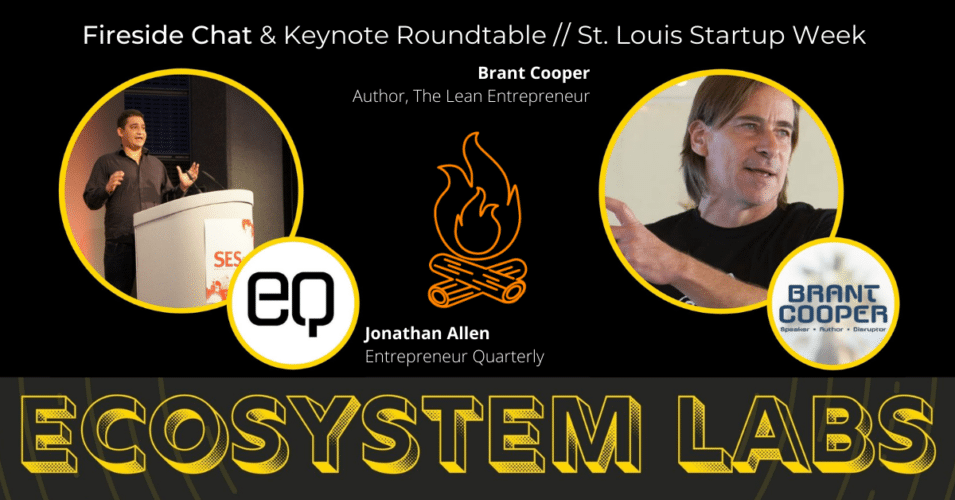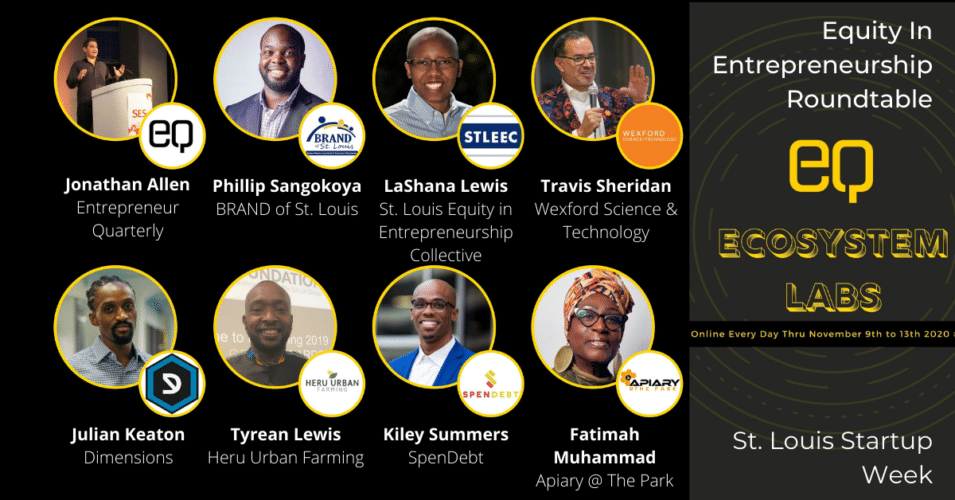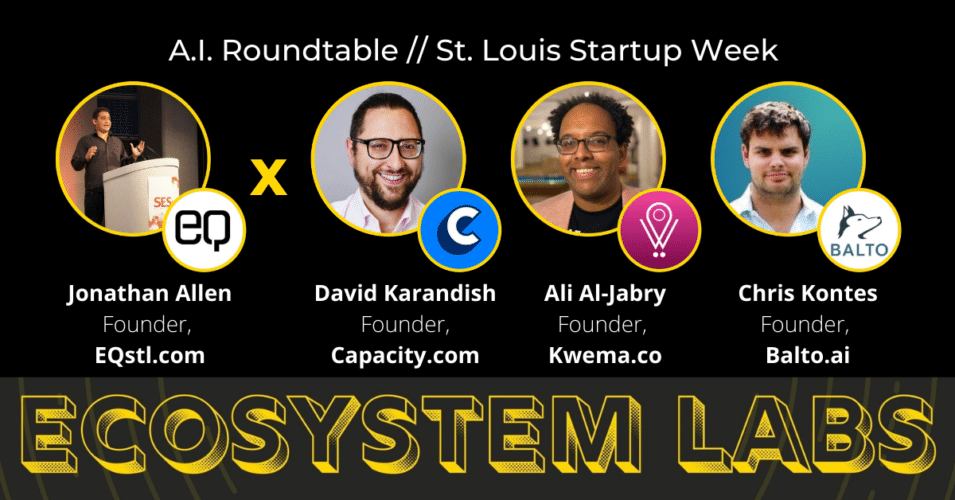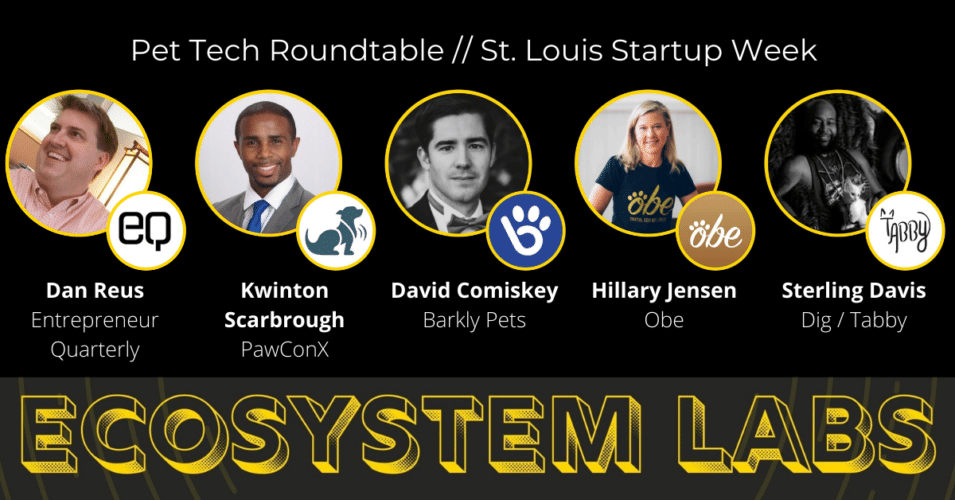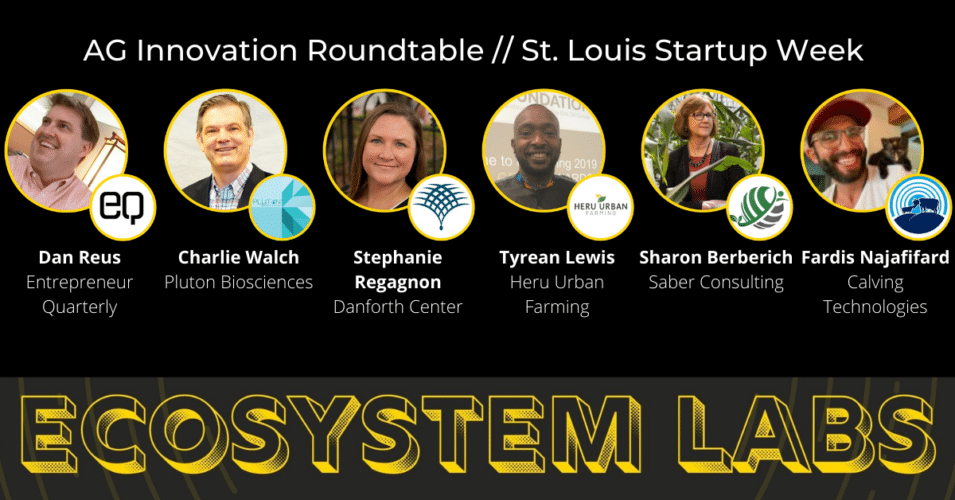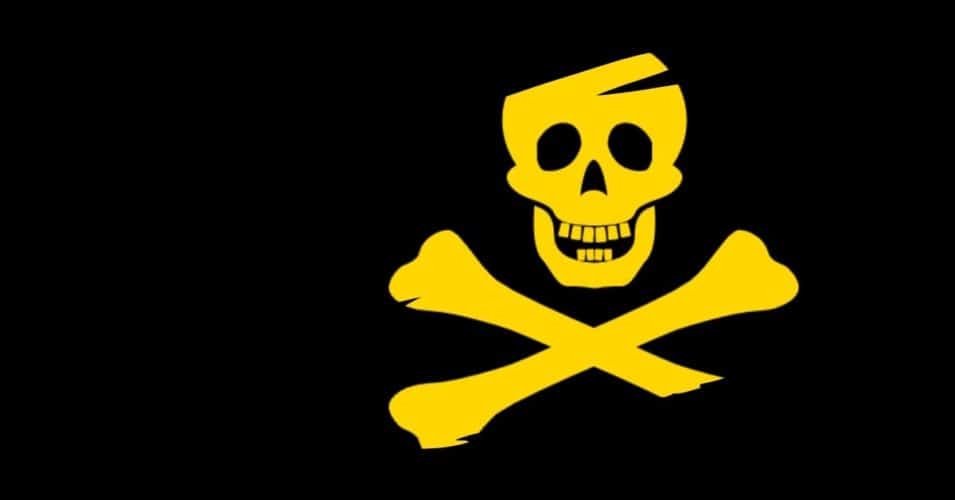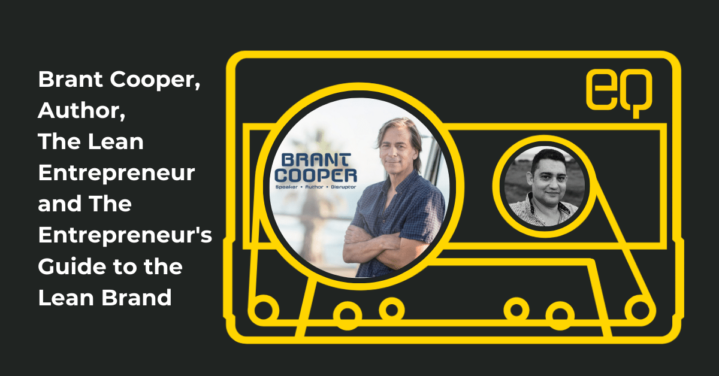
Talk Like A Pirate Day presented by Entrepreneur Quarterly for Entrepreneur Quarterly
Brant Cooper on Silicon Valley Startups, Pirate Metrics and Value Discovery
AARRR! To celebrate Talk Like a Pirate Day, EQ discusses "Pirate Metrics" with Brant Cooper, Author of "The Lean Entrepreneur." And by "AARRR!" we mean Acquisition, Activation, Retention, Referral, Revenue.
Jonathan Allen: I’m with Brant Cooper. Hi Brant. Welcome to EQ.
Brant Cooper: Hi, thanks for having me.
JA: [00:06] So we’re talking because Talk Like a Pirate Day is coming up.
BC: [00:11] ARRRR
JA: [00:12] And you’d written a story all around Pirate Metrics and your development from there. First question is, off the top of your head, how are startups like pirates?
BC: [00:22] It’s funny, most people think of pirates as being like, super evil and, robbers and there’s probably some truth to that, but citizenry actually saw them as Robin Hoods.
So, they were super anti authority and their job was actually, in support of, the average citizen and so there’s some story, from somewhere I don’t remember where it is exactly, but where some town official was announcing the capture and execution of these pirates and all the citizenry was booing because it was the authority that was screwing them over, not- Pirates screw over the authorities, not the individual citizens.
So in that way, I think in the best of light startups are the same thing. They’re disrupting the status quo.
I think that there’s actually a negative side of that where startups that have been overrun by investors no longer are the Robin Hoods. And even it’s ironic, the startup that’s named Robin Hood is not Robin Hood at all, but is actually, really messing up young people who are investing in the stock market for the first time.
But I think that the ethos that entrepreneurs should have is to be the pirate going after the status quo, but they should also be keeping in mind that what they’re doing this for is to create value in the world. Wealth comes from creating value in the world.
Instead of focusing on just, “how do I get rich?”, which I don’t think most startup entrepreneurs are out to do, it’s, “how can I change the world? How can I make it a better place?” and “oh, by the way, if I’m successful at that, then returns will come to me as well.”
JA: [02:12] Yeah, I love that answer. I think that’s the thing, right? Pirates were radicals of their day. They were disrupting the status quo. They ran their ships *weirdly* democratically. All kinds of like new systems of HR were invented, like, on the sea.
One of the things you talk about is “value discovery loops”. And that idea came from another idea, which was “Pirate Metrics.”
What was Pirate Metrics originally? And how is it intended to help companies? And then we’ll get on to value discovery.
BC: [02:46] Yeah, so Pirate Metrics, was really the invention of David McClure. And, he’s a ex-PayPal, so he’s part of this what they call the PayPal mafia, and he was really an extraordinary person in the sense that he hadn’t made a ton of money from PayPal. He made *a lot*, but not compared to Elon Musk and some of these other graduates.
So he wasn’t that high up in PayPal, but he was a director of marketing there, and he did pretty well. And even though, his returns were modest relative to the founders, he still reinvested the money into the Silicon Valley ecosystem.
So he was the first guy that was really known as a “super angel” in this 2007 to say 2010 period, where as an angel, he was putting significant amount of money in startups compared to the traditional angels up at that point. And I really think he was an interesting thinker in that time period. A leader in trying to connect a new way of investing to startups.
He has a number of amazing posts back in that time. And one of them was startup metrics. And another one was “Moneyball for startups”. And that was, really dovetailing on the movie “Moneyball” that was really talking about, “how do investors really focus on the right metrics for these startups?” And Pirate Metrics came out of that.
Back in those days, free network effects businesses were hip and freemium startups were hip. And so he invented this acronym which was “Acquisition”, which is going out and getting your first users.
And “Activation”, that was getting those users that you had acquired interested in your product and trying to receive the value from whatever your value proposition was.
And then “Retention”, and so that means that now they’re used to your product in a regular way; they’re part of it. And then it’s a “Referral”, so now because they value your product, they’re inviting other people. And you don’t really worry about “Revenue”, which is the last “R” until after there’s “Retention”.
And so basically what you’re doing is you’re building a good enough product that people need to share it with their network. And so that’s actually what causes exponential growth. And then once you get exponential growth, you worry about how you’re going to make money off of it.
Back in those days, I don’t think Facebook was making a profit yet and Twitter, even years later, hasn’t figured out really how they’re going to scale revenue, but they successfully achieved the network effects. And so you know, that’s where people started getting into the advertising model and selling data and some of these things that have now led to some really pretty serious ethical problems and other problems among those network effects businesses, which is this whole other ball of wax that really nobody saw coming, or at least, nobody in the mainstream.
But anyway, that acronym AARRR, if you pronounce it out loud, “AARRR”, you sound like a pirate, and that’s why it’s called the pirate metric. So, that was the beginning of it and I blogged about it, and a bunch of other people did too.
And it really became a foundation for how startups think about building their network effects business and, ultimately people start thinking, well “how does it apply to other internet based businesses like SAS?” And it turns out, you have to start messing with that acronym in order to get that to work properly.
JA: [06:45] Yeah. And that was a brilliant explanation actually.
And then you adapted this idea of network effects and went into the “value stream discovery loop”. And what I find interesting about that is this idea that, it’s about working out, ‘what the customer wants to do.’
So, one of the things you said is, ‘we tend to think about what the business wants to do, and we don’t think about the customer. And the really insightful thing you say, is that ‘the customer doesn’t necessarily even know what they want to do.’ Can you talk a bit about that?
BC: [07:17] Yeah, at the same time that McClure was writing all this stuff, the Lean Startup movement was just starting. And, as matter of fact, there was also a design ethos that was going on.
If you go back to McClure’s original post, when he describes the business activities that support his Pirate Metrics, each one of those steps he’s got this super huge messy slide. And it’s funny. McClure was known for, like, really super messy slide decks and so he just embraced it. That was just part of his shtick.
But you literally have, like an infinite number of things that a business might do in order to acquire a customer – or to retain a customer. It’s an infinite number of things for a business to do.
So, what I was trying to work through, “what if we thought about this, like from the customer’s point of view.”
If you think about human centered design that is essentially being about “how do we build products that delight users?” Where we’re solving for the needs of the users and, customer journey mapping was going on and there’s all these principles that are based upon, “think what the customer wants.”
And design thinking are a set of practices that were going around in the same time period, which is really around building empathy for the customers that we can understand what the needs are. So, the needs of the customer is not only in the design of the product, it’s a whole journey in their experience with your startup.
And so, it’s when you first become aware to when you perhaps become passionate. And, so, what I was thinking was along those lines for each one of those steps that McClure talks about, what is the customer feeling, like what is their experience?
And so I ended up adding a couple of steps because I was fleshing what I thought really are the steps that one goes through marketing and selling and becoming aware and passionate of a product.
So that’s how I would seven steps that they’re the states that a customer goes through. First becoming aware and then becoming, “Okay, now I’m interested, I feel like you’re talking to me,” so I’m ‘intrigued’ or ‘interested’.
And then, what’s the next step? I have to trust you. Are you the right company to fulfill the promise? Is this the right product that actually will address my needs? So I’m going through this period of feeling like, do I trust you? And then when I buy – Why do I buy? – It’s because I’m convinced you’re the right person. And then there’s this step of, “I hope I made the right decision.”
And so I want to achieve value as quickly as possible. And so I go through a period of “I’m satisfied”, but I’m only satisfied, I’m not passionate. I’m not telling everybody else because I’m satisfied; you’ve only fulfilled your promise. Of course, you should have done that right? But I’m satisfied, I’ll keep coming back.
And then there’s this other state, which I just think entrepreneurs don’t think about. What is something more that I have to do; that makes the customer feel so ‘special’ or feels like they’re a part of something larger than themselves that makes me want to refer you to other people?
That is really just passionate, and so, since there’s an infinite number of reasons why a business could do a particular activity. If I thought about this human being that became aware of my product and then bought it and then became passionate.
What do I have to do that moves that human being from the different states? And now I know what should I go test.
Right? So, now this gets into “The Lean Startup” part of it: how can I validate my ideas are right? That I have the right customer; that I’m providing the right product; that I know how to market to them; understand what their objections are, and how to overcome those objections so that they’ll buy.
How do I understand what is the key part of my product that drives the value, which is this ‘hopeful’ part? And how do I keep them engaged over time? And then what is this larger thing that I need to provide that makes them passionate. And, of course, passionate refers to the referral part of the Pirate Metrics. And that means that they’re now, like, putting people into the top of my marketing funnel — without me doing any marketing — and now I know that’s how I can get exponential growth.
JA: [11:54] Yeah. And what I find really cool about the value stream discovery league is, in marketing, we talk about personas, and they tend to be like really static things. Whereas, in the way you create a customer, they’re dynamic; they can change. They’re having human experiences. And also that customers meet us at different stages and can change from that stage. So I really like that kind of thinking.
BC: [12:23] Thanks.
JA: [12:24] You think about it now; SAP bought Qualtrics recently. Customer experience is like *the big category* right now. And, for a lot of startups, they’re probably going to exit to a big customer experience company, so it was very prescient.
BC: [12:44] That’s just where the world is right now. We have to please customers and in order to do that, we have to understand customers and that part of you as an entrepreneur, as a startup, is you always have to remain close to your customer.
So I do a lot of corporate innovation stuff, and so the pandemic has really brought this home, and I’m sure to startups as well. But inside the large enterprises, they’re they stopped all of this innovation work, and they’re like, “Oh, we really got to buckle down.”
And I would ask these leaders, what do you mean, you’re buckling down? It sounds like what you’re doing is going back to what you know. And so that’s what they meant is, “we have to go back to what we know and we have to execute harder.”
And I’m all like, “But if your customers don’t have any money anymore; If your consumers don’t have a lot lost their job; or your small businesses are going out of business : Your customers have changed!
So, what are you buckling down to? You don’t know anymore. You have to go back out and learn about your customers. And, of course, the big companies don’t know how to do that and it’s really where the startups can move faster.
And I… I fully 100% believe that the startups that don’t try to automate everything, at first, but to try to meet your customers, via zoom or whatever is necessary, to understand them to hustle and get as many customers that knowledge and the insights that you glean, there is your competitive advantage. More than automating your systems, it really is the key is to understand where your customers are now, and being able to adapt quickly in order to take advantage of the changes.
JA: [14:20] That’s fascinating. There’s two directions I want to take the conversation. In one of your blog posts, you actually reference the Airbnb founder saying, “Do things that don’t scale.”
And I didn’t understand the value of that until what you just said, around ‘don’t automate, just talk.’ That’s an unscalable thing, but there’s so much you can learn in that process.
BC: [14:44] So my phrase here is marketing is “automating what you’ve learned,” right? It’s automating as much of the sales process that you actually did in-person.
So, an example would be you set up an online… I don’t know, maybe an e-commerce site or even a SaaS site… you’ve got all of your pages up there; you’ve got your shopping cart; you do your awareness, you’re running some AdWords or Facebook Ads or whatever, and you’ve got some traffic coming in… [but] your conversion rate is really low.
What do you know? Like, you don’t really know anything.
But if you go talk to ten customers, and you try to get them to take their credit card over the phone, and they’re refusing and you’re asking them, “Why?” Right? And you’re learning then, ‘what are the obstacles?’ And you’re learning right there in the moment: how do you overcome their obstacles?
Now go back to your website and write, as part of your shopping cart page, or maybe one step before it, you have a ‘frequently asked questions.’ And so the ‘frequently asked questions’ are the ways you’ve already learned to overcome their objections.
Because you’ve met with them in person and you can predict what their objections are. You’ve automated what you’ve learned in person and now that conversion funnel is going to be way more optimized.
And you’re gonna get there quicker by learning that stuff in person than trying to just run 1000 experiments. And so it’s really just that knowledge and those insights that you glean from learning one on one with your customers that really is going to get you that traction.
JA: [16:21] I love that. And it’s so true. Like it’s belly-to-belly interactions between people that all that learning is happening.
There’s kind of two responses right now say to the lockdown and the pandemic: those people who are pushing towards me because the future is remote and virtual. And those people who are actually doing the exact opposite, and having more phone calls and Zoom calls than ever…
And talking for almost no reason. Calls that are really learning a lot about people and behavior.
BC: [16:51] Yeah, I think that at least early until you figure stuff out every time you talk to a customer, you’re building a relationship or you should be. So these aren’t one-offs, like, “Oh, thanks for your time.”
It’s trying to understand them deeply enough that they want to be a part of your journey. And this is especially true, I think in b2b. But I think it’s true as small business owners, and I think it’s true to a certain extent with consumers, aswell.
Obviously, you’re trying to scale more with consumers. But I still think that learning is vital. And I think that if you try to automate too quickly, you’re just taking a shot when you don’t know.
JA: [17:29] Yeah. And you know, what I also love about what you’re saying is it’s like, ’embrace inefficiency’. It’s like medicine for this time of yeah, hyper automation, this AI inevitable future and all of that.
And actually, there’s so much to be learned in inefficient processes because then that’s how you can find out how things improve. Yeah, you can find out all these stages of a buyers emotion and a customer’s experience.
And actually, that leads me back to the other thing you said. I wrote an article recently about how I think that local startup ecosystems, rather than try and worry about getting more investors in, when we’re facing like a recession and The Great Acceleration, can’t we work with all the big incumbent Fortune 500 companies that are lumbering and slow to innovate, can we not all embrace their inefficiencies and turn it into a learning experience that creates entrepreneurs and intrapreneurs, and spins out new companies? What do you think of that?
BC: [18:41] I’m not sure to be honest. I think that there’s been a lot of talk between how startups and large companies can work together.
I think that most, quote unquote “real startup entrepreneurs” don’t want to work on somebody else’s idea. There’s something that’s driving them.
JA: [19:01] They’re pirates!
BC: [19:03] Yeah, exactly. And so I think that there’s a mismatch there.
I think that big companies want to learn that spirit from the startups, but the startups really want the big company as a customer … I really think there’s absolutely zero reason why big companies should not be investing small chunks of money into startups. That’s just a no brainer to me.
And actually tech stars program is pretty successful at that. Getting companies to actually spend quite a bit of money investing in startups. And there’s a little bit of rub off there on that entrepreneurial spirit into the corporation.
I don’t know, I guess I think that large companies should be doing startup scouting and tech scouting, and so they should understand what their local ecosystem is. I think they should invest in the ecosystem and that means providing space, it means you know, buying pizza and beer for the local ecosystem.
It should be doing enough investigating that they can throw small amounts of money into startups; or setting up a fund that puts significant amounts of money in it; or becoming an LP in a larger fund.
There’s one corporation that we worked with that went to the ecosystem and had them work on a startup idea that competed with one of their internal startup teams. And I think that’s a cool idea. But if I’m a corporate, how do I know that’s actually a good startup team or a good entrepreneur?
I think that there needs to be a getting to know each other. But I’m not sure that internal startups could actually go work on corporate ideas because corporates are immediately going to run into the problem of intellectual property.
And the startups are immediately start wondering, “Am I my own business?” There’s some tough parts there. So I kinda like them being separate, but supportive of each other.
JA: [21:11] I guess my idea was I wonder if you could democratize the inefficiencies at large companies and outsource the investigation into the inefficiency to startup founders or the innovation ecosystem to work on.
BC: [21:28] Yeah, so that’s the work I do with corporates. And I guess I think that’s a stopgap measure.
In other words, I think enterprise corporates have to figure that out, or they just won’t survive. If they continue to just patch their inefficiencies, then ultimately, they break. I guess there’s some people that believe in, that’s the natural course.
But I think that’s a painful course and I think society doesn’t do a real great job of supporting ecosystems when it busts. You don’t really have to look any other place, then the Midwest and the rust belt to see how when disruption happens, communities are abandoned, they’re not supported.
So I like your idea. I think we should keep those big enterprises going. But to me that’s done by them, learning how to do it.
JA: [22:19] You’ve experienced a lot of startup communities, right? You’ve talked to many all over the world and participated in their startup weeks. What do you think about the future of startup innovation ecosystems?
BC: [22:33] I think it’s a golden age. I think that we saw a trend pre-pandemic, where people were realizing not everybody can go to the big tech hubs.
I think you see universities that are producing all of these great, entrepreneurs and developers, and a lot of those people leave the towns where those universities are, and that it really leads to dying cities and that’s not good. We can’t actually have everybody moving to urban centers.
And that means that we need to build these ecosystems and build places for people to work that’s close to where they live and want to live. There’s a greater trend towards people, investors looking outside of their local ecosystems.
I think there’s a lot of training and new skills that need to be developed in investor communities that are local. Angel investors are not just wealthy people, they’re wealthy people that need to learn how to invest into startups.
It’s not the same thing as real estate investment. And a lot of them believe, “Oh, I can just choose one startup and I’m going to get all of these returns,” and it just doesn’t work that way.
And it’d be better off if they participated, as an LP in a seed fund or in syndication where other people are picking winners. Really it’s not, “Can we attract more investment?” It’s “how do we turn our existing wealthy individuals into better investors.”
And having those people commit, not to home runs, but into producing singles and doubles. Even non-traditional like they should be in doing maybe loans instead of purely looking at equity. The potential for returns there is way better than what they’re going to get in interest rates these days.
And so I think that there’s a lot of people with the money that are looking for the appropriate investment. I think investing in the stock market is overrun by speculators and gamblers.
The real estate is pretty unpredictable. Interest rates are too low.
And so I think that there’s this whole emerging way of doing financing locally, based upon loans or small equity returns, singles and doubles that is a way to support small businesses and startups. And those are two different things in a way that produces returns for the investors while building a local, vibrant ecosystem of small businesses and growing startups.
That is where job growth happens. Job growth does not happen from propping up large dying industries. Growth comes from enabling a startup ecosystem.
JA: [25:33] So actually, you’re kinda optimistic going into recession and The Great Acceleration. You’re optimistic.
BC: [25:36] Yeah, I have to be . I guess that’s in my nature.
But I think that, there’s a dystopian version of all of this. We all read the news, and the dystopian is like super scary and super close in some regards.
I think Americans are smart, and we’ll see our way out of it. I think that the pandemic brings home a lot of these things that are occurring anyway.
There’s, people need to, there’s that old bumper sticker that’s been around for ages, right? It’s “think global and act local.” And that applies to capitalism. And fundamentally, I’m a capitalist.
But it also means that as a society, if we choose capitalism, then capitalism can’t be part of the problem. Capitalism has to be solving the problems. That’s the promise of capitalism.
That’s what my next book is about and it’s not a woohoo book on do-goodism, it’s a book on how capitalists should be driving change by creating value in the economy and a lot of the other problems and ills of society are solved or begin to be solved by corporations focusing on creating value.
JA: [26:55] I love the sound of that. When capitalism is doing it’s job it’s actually looking after all the people working within the system, it’s not just kinda oligarchical system. Last question for all the kind of coworking spaces, startup accelerators, investors and founders in St. Louis, what would be your message for them?
BC: [27:16] Yeah, so I think it’s exactly that i think it’s growing your ecosystem, be open and inclusive, be extraordinarily purposeful around diversity, around including the underrepresented in furthering tech skills, but also including all entrepreneurs, including small businesses and food startups and all of the non-tech.
Universities struggle because they want to keep stuff on campus. And my big message there is that universities that want to be part of the ecosystem need to be a part of the ecosystem that’s off-campus, not on-campus.
Governments should be empowering the grassroots ecosystem that exists outside of government control, not run by government. Government’s main job is to streamline bureaucracy and shine a light on the successes.
The investment community is, their job to me, is seed and early rounds. The later rounds, I think, take care of themselves because investment flows towards returns.
And so if we’re building the base of the pyramid, the startups that should be invested in later stages are obvious because it’s based upon metrics that demonstrate a proven business model. So, I really want to see the wealthy concentrate on building the bottom of the pyramid.
The entrepreneurs responsibility is to not be asking what the ecosystem can be doing for them. It’s to be running the ecosystem themselves and not looking towards others to do it for them. The successful ecosystems are run by the entrepreneurs for the entrepreneurs.
The service providers, the University, the Government, the investors there are in service to the entrepreneurs, not running the ecosystem. And the entrepreneur’s job is to prove their business model, not ask for, “Hey fund my great idea.”
Jonathan Allen: Brant, I’m so glad I tracked you down on Twitter. That was amazing. This was a brilliant conversation. Thanks so much for speaking with us today.
Brant Cooper: Yeah, you’re welcome!

